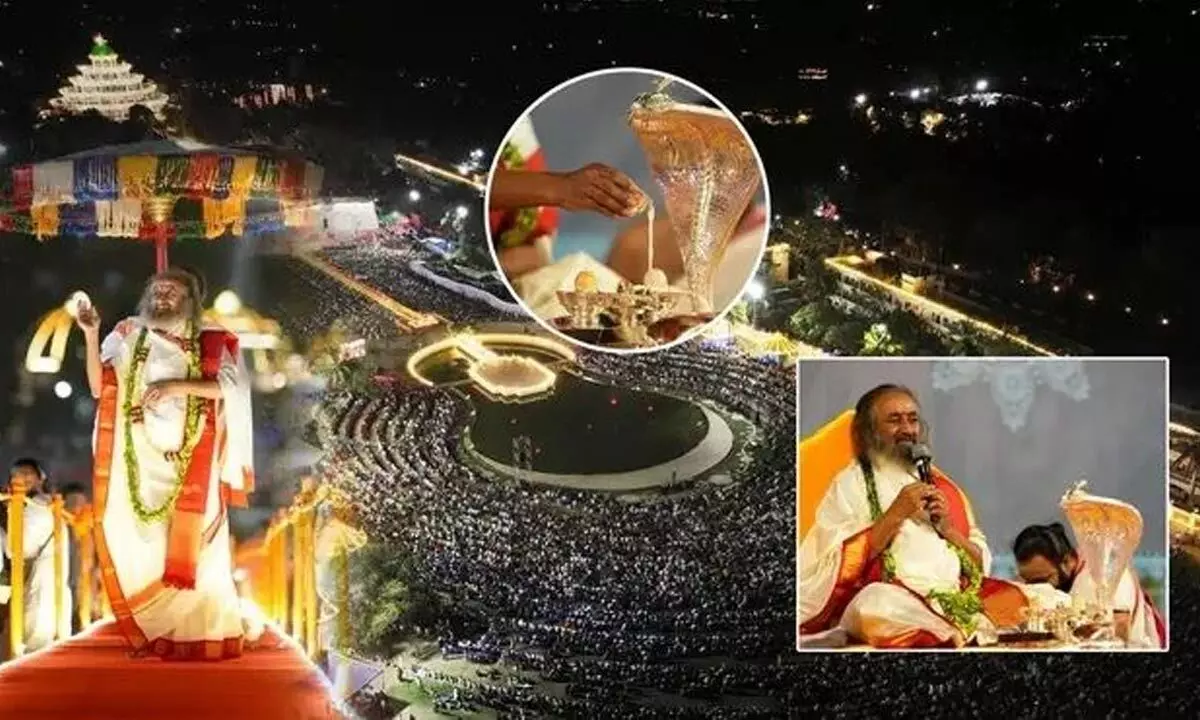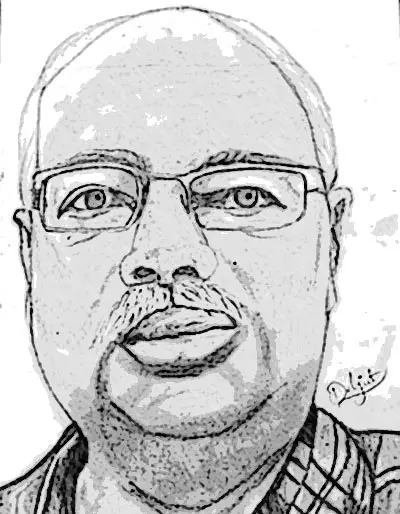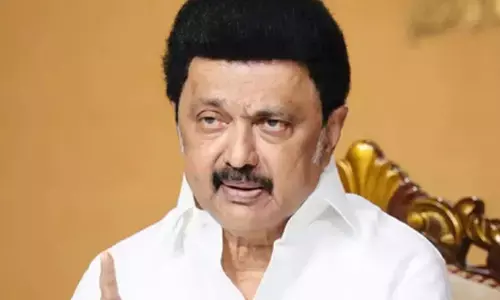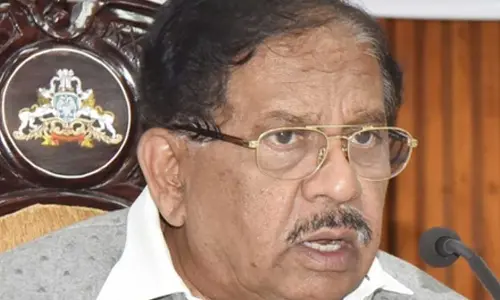A MILLENNIUM LATER, INDIA TO WITNESS HISTORIC SPECTACLE

Lord Somnath all set to return to his abode at Somnath at Veraval in Saurashtra
The story of the most mysterious stone in the world — a 1000-year-old levitating Jyotirlinga — has resurfaced after centuries of secrecy. Once housed in the revered Hindu Shiva temple of Somnath, located in Veraval, Saurashtra, on the western coast of Gujarat, this enigmatic relic was thought to have been lost after the horrific invasion of the temple. Now, against all odds, it has emerged from obscurity, challenging skeptics and fascinating believers alike.
According to ancient scriptures, as quoted by spiritual leader Gurudev Sri Sri Ravi Shankar, Somnath is the holiest of the 12 Jyotirlinga temples. It was built in Satyuga by the Moon God, Soma, and was the very place where Lord Krishna performed penance. The temple housed a Shivlinga that was said to defy gravity, hovering in the air through a powerful magnetic force. This phenomenon made the temple not only a sacred site but also an architectural and scientific marvel of its time.
However, the temple’s immense wealth, power, and religious significance made it a prime target for invaders. In 1026, Mahmud of Ghazni exploited the political disunity among Indian kingdoms and launched a brutal attack on Somnath. His forces stormed the temple in relentless waves, massacring thousands of devotees, looting its treasures, and ultimately destroying the revered floating Shivlinga. The devastation left behind was immeasurable, and the Jyotirlinga was presumed lost forever.
But history took an unexpected turn. The Agnihotri priests, custodians of the temple’s sacred rituals, secretly collected the shattered fragments of the Shivlinga. They reshaped these pieces into smaller Shivlings and vowed to protect them at all costs. For a millennium, these priests safeguarded the sacred stones, passing them down through generations while performing rituals in utmost secrecy. During this time, they made a remarkable discovery — the fragmented pieces of the Shivlinga exhibited a magnetic effect, providing a vital clue to the original Shivlinga’s ability to levitate.
Skeptics and self-proclaimed rationalists may dismiss this as mere mythology, but scientific analysis has yielded astonishing results. Researchers who tested the stones were left astounded by their composition. The samples contained only 2% iron and an extraordinary 78% magnesium, suggesting an extraterrestrial origin. Scientists speculate that the material may have originated from a meteorite, adding another layer of intrigue to the mystery.
According to Sri Sri Ravi Shankar, in 1924, the Kanchi Paramacharya advised the Agnihotri priestly families to keep the Shivlinga fragments hidden for 100 years. With the century-long period of secrecy now concluded, the present Shankaracharya has recommended that the fragments be entrusted to Sri Sri Ravi Shankar. His proposal includes embarking on a pilgrimage across all other Jyotirlingas before consecrating the fragments back in the Somnath temple.
Historical records support the existence of a floating Shivlinga in Somnath. Persian geographer Zakariyah Al-Kazvini documented an intriguing account of the temple. He wrote: “Somnath is a celebrated city of India, situated on the shore of the sea and washed by its waves. Among the wonders of the place was the temple in which was placed the idol called Somnath. This idol was in the middle of the temple, without anything to support it from below or suspend it from above. It was regarded with great veneration by the Hindus, and whoever beheld it floating in the air was struck with amazement, whether he was a Mussulman or an infidel.”
Pilgrims from all over India would journey to Somnath, especially during lunar eclipses, believing that departed souls congregated there before reincarnation. The temple’s grandeur was unparalleled, adorned with gold and silver idols, bejeweled vessels, and treasures donated by royalty and devotees alike. The estimated wealth stored within the temple exceeded twenty million dinars.
When Mahmud of Ghazni and his men encountered the levitating Shivlinga, they sought to understand its mystery. Some believed it was upheld by an unseen force, while others speculated that a canopy of lodestones (naturally magnetic stones) above the idol was responsible. To test this theory, the invaders removed some of the canopy’s stones. As predicted, the Shivlinga tilted and eventually rested on the ground, confirming that magnetic forces had been at play.
This historical testimony reinforces the fact that the floating Shiva-linga was not a myth but a marvel of ancient science and engineering. The resurgence of the lost Jyotirlinga of Somnath is more than just a historical revelation; it is a symbolic awakening. It is a reminder of India’s rich spiritual legacy, a testament to the resilience of faith, and a challenge to those who seek to undermine cultural heritage for political gain. As the sacred fragments prepare to return to Somnath, they carry with them the untold stories of devotion, science, and history – a legacy that refuses to be forgotten.
Yet, despite such profound cultural and historical significance, India’s political climate remains rife with anti-Sanatan sentiment. Some political factions refuse to acknowledge the resurgence of interest in Hindu heritage and spirituality, opting instead for divisive tactics and appeasement politics.
Our political parties are unable to digest the welcome change where people have started feeling proud of their culture, religion and their roots, have started nitpicking into everything. One fails to understand why they continue to suffer from Hindu phobia and claim they are ‘Janevudhari.’ I really wonder whether they fully understand the meaning of the words they use.
It is high time the Congress party which berated Mahakumbh explain what their core ideology is. On the one hand, they criticise Sanatan Dharma and Manusmriti and, on the other, they want misappropriation of temple funds for ‘Fatafat Khatakhat’ freebie programmes.
Recently, a notification issued on January 29 by the Himachal Pradesh government outlined new guidelines for temple trusts to contribute financially to state-run welfare schemes. The directive suggested that temple funds be used to support initiatives like the Mukhyamantri Sukh-Aashray Yojana and Mukhyamantri Sukh Shiksha Yojana, which aim to aid orphans, elderly citizens, and impoverished women.
A critical question arises: why are only Hindu temple funds being targeted? Why are similar contributions not sought from institutions of other faiths? The selective imposition on Hindu religious institutions raises concerns about secularism and fairness in thought. It is a stark reminder of the historical looting of temples, echoing the plunder of Somnath’s sacred relics centuries ago.
The hypocrisy of certain political parties is glaring. On the one hand, they discourage public figures from attending Hindu religious events, considering such participation politically inappropriate. A recent example is the criticism faced by Karnataka Deputy Chief Minister D K Shivakumar for attending a Mahashivaratri event at the Isha Foundation in Coimbatore.
On the other hand, the same factions demand financial contributions from temples while ignoring similar expectations from religious institutions of other faiths. One wonders if history is repeating itself as we saw in the case of the levitated Shivalinga.














